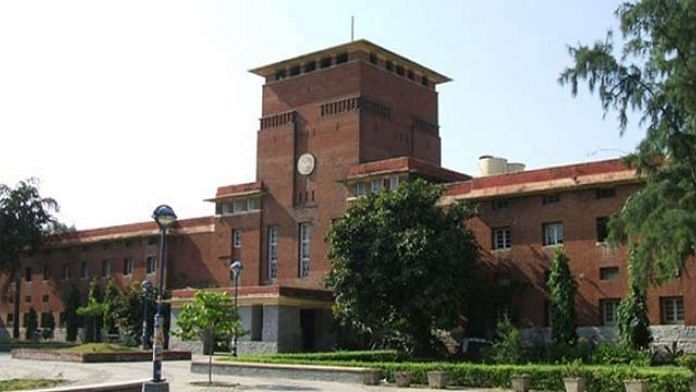Swedish physicist Hans Rosling, in his book Factfulness, wrote, “Things can be both better and bad at the same time. Saying that things are improving does not mean that one can turn away from the problems.”
This year, 1,57,934 students scored over 90 per cent in the Central Board of Secondary Education-conducted Class 12 board exams, while 38,686 got more than 95 per cent. More than 5,000 students scored a perfect 100 in these exams.
Unfortunately, these numbers have made matters worse for those who have always dreamt of getting into Delhi University.
Such high marks have led to an increase in the number of applications. Around 3 lakh students from the total number of applicants are from the CBSE. The applications have surpassed the seats available.
Therefore, to avoid overcrowding, the university released cut-offs that defy gravity. This has been happening year after year as it is believed to be the safest option. Apart from St Stephen’s college, cut-off percentages are the only filter through which students are admitted.
Different marking schemes for different states
Is this fair? Perhaps not. These cut-offs are based on the marks scored in the board exams. However, aren’t board exams just a test of students’ memory, and not competence?
“The entire exam paper now has very specific questions that carry a few marks like 2 or 3 marks. If you get the correct answer you get the full marks. And the correct answer means the answer given in the textbook or the model answers. Students can mug up and answer the questions,” Krishna Kumar, the former director of the National Council of Educational Research and Training (NCERT), had explained.
Students from other states are attracted to Delhi because of all the facilities and opportunities the national capital provides. However, there is no uniformity in the marking schemes of various state boards. In states like Assam and Manipur, it is not easy for students to score a perfect score. The educational boards of these states are very stringent with the marking process, leaving the students with very few choices.
However, the educational boards of states like Bihar and Tamil Nadu are very lenient with marks. Perfect scores on their mark sheets is nothing unusual. With such variations in the methodologies adopted by the state boards, setting a universal cut-off has deprived admissions to a large number of students.
Many students in India score 100 per cent in English Literature. This is true of other subjects in the humanities stream as well. Many examination boards also increase marks in the name of moderation. This process started with providing grace marks to students of classes 10 and 12 to pass and eventually turned into an exercise to enable students to secure admission in central universities.
Reforms need to be taken
To do away with all these stumbling blocks, a common entrance test needs to be brought into place.
Officials argue that such a step cannot be taken due to the large number of students and the associated uncertainties. Many students have also said that appearing for entrances on top of their board exams will put additional pressure on them.
But this does not make complete sense since a fraction of this same set of students prepare for competitive examinations like the Joint Entrance Exam (JEE), National Eligibility and Education Test (NEET) and Common Law Admission Test (CLAT), along with the Class 12 exams. Admissions into a few colleges in DU have also been based on the Joint Admission Test (JAT) for many years now.
The need of the hour is to bring all the colleges of the university under a single entrance, which tests the skills of the future of the nation.
Increasing the number of public universities, introducing more private universities like Ashoka University and the O.P. Jindal Global University, and adding more seats to existing colleges are some of the other long-term solutions that need to be looked into. These are changes that need proper planning and execution and cannot be hastily implemented.
An entrance test like the DU JAT will go a long way in filtering out student by taking into consideration both marks and skills. The university can use improvements in artificial intelligence to its advantage and introduce online test mechanisms.
The Scholastic Aptitude Test (SAT) and the American College Test (ACT), conducted in the US, are substantial precedents for an entrance-based model that can be used for admissions. All students, irrespective of where they are studying will be able to get a level-playing field when it comes to availing good teachers and infrastructure.
Priyanshi More is a student of Delhi Public School, R.K. Puram




We must resolve this dilemma on priority
Seraj Ahmad Misbahi
FounderAlsafarah Services India Private Limited